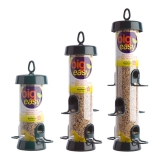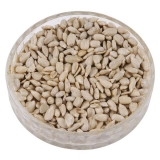Explore Our Garden Wildlife Blog
Browse or search by Category or Keyword below, alternatively click on any Tag to see related articles.


Great Tit, Identification, Habitat and Food
By Ark Wildlife
20th August 2013
Last Updated: 8th January 2021

Identification
Length: 14cm.
The head and throat are black with bluish highlights, white cheeks and yellow under parts with a broad black bib down the middle. They have yellowish backs with olive-green on the nape and grey on the rump. Their flight feathers are black. It has a black bill and greyish-blue legs. Both sexes are alike, as is their summer and winter plumage. Where the adults have white parts the youngsters will have yellowish bits.
Call
These birds have a very extensive vocabulary and can imitate a wide range of species. Constant calls can also be heard including a loud resonant ‘teecha-teecha-teecha’ as well as a ringing ‘zinc-zinc’.
Reproduction
Breeding starts from late March. The female builds a cup-shaped nest of roots, moss and grasses lined with hair, plant down and sometimes feathers. They nest in a hole in trees, rocks or walls, they may also use nest boxes.
They lay eight to thirteen white, with purplish-red speckles and blotches, eggs. The female alone incubates for about thirteen days. Both tend the young.
Habitat
Great Tit’s like woodland, orchards, gardens and parks. They like areas with scattered trees.
Natural Food
Insects, larvae, mollusc’s and earthworms. Also likes berries and seeds.
Where to Feed
Feeders – Ideally above 1m in height
Table – Open topped or covered
Ground – Not suitable











